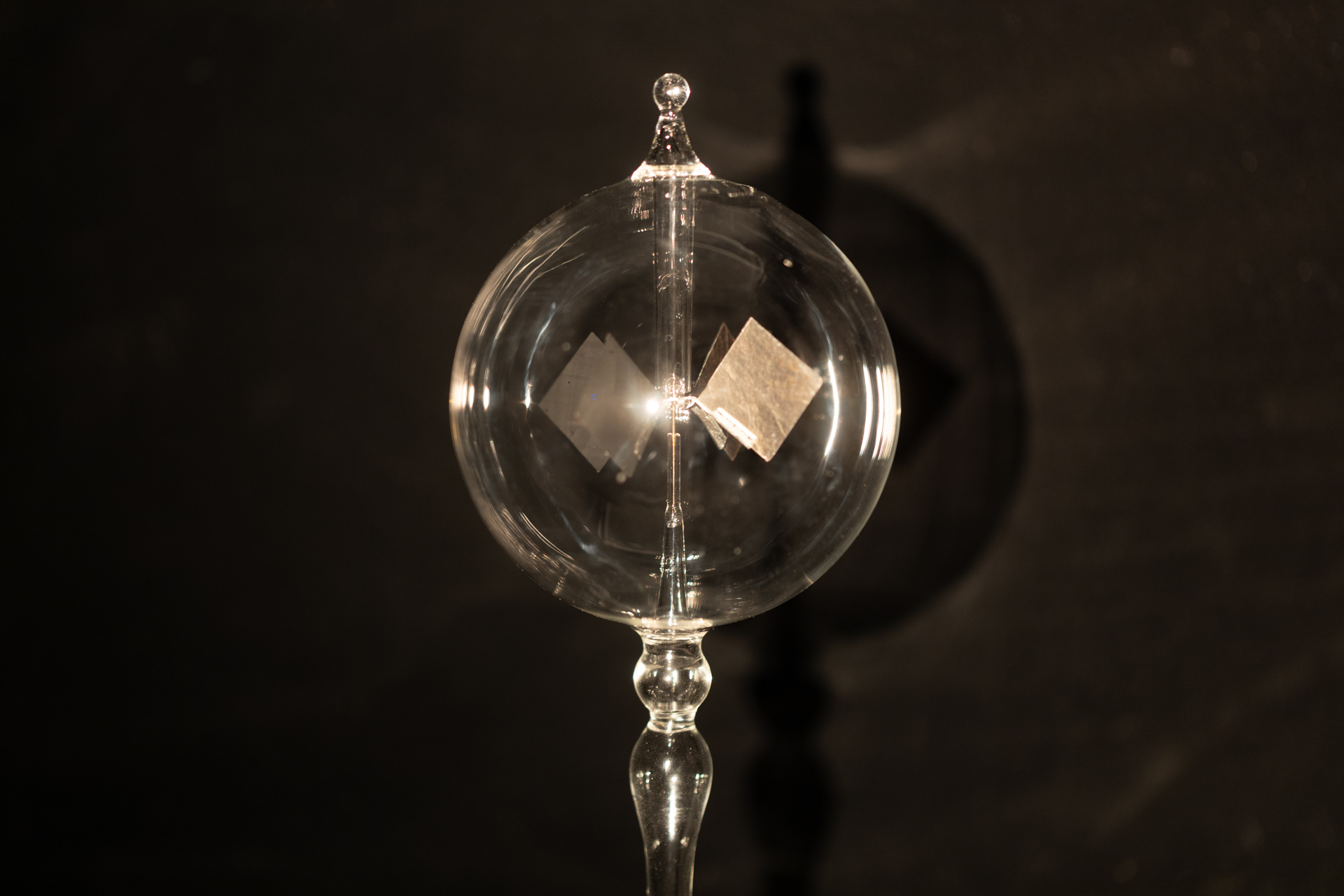
I was recently struck by an unexplained desire to craft a classic scientific object, a “radiometer”. It was first created and demonstrated in the 1800s as scientists explored the fundamental elements of nature, especially the behaviors of atoms and molecules. The periodic table and the ideal gas law that we learned in school were figured out during this time through many careful experiments.
Among the experiments was one performed by William Crookes while trying to isolate and identify his newly discovered element Thallium. To make high-precision measurements of mass, he avoided the disturbances of air currents on his balance by putting it in a vacuum. But he found that the readings were still varying, depending on whether the balance was in sunlight or not. With his laboratory skills, he crafted a device to demonstrate the effect, a device that today is known as a “Crookes radiometer”, or “light mill”. It is a delicately balanced arrangement of vanes, black on one side, white or silver on the other side, suspended in a glass vacuum tube. Crookes discovered that when the vanes were illuminated by sunlight, they moved, rotating around the balance point, demonstrating that light induced some force to cause the rotation, and that force was also responsible for the variations in his mass measurements. See this account for a wonderful history of the radiometer. There is still some scientific uncertainty about how exactly it works!
My fascination with the Crookes radiometer began as a child when I first saw one spinning in a store window. My dad was with me and was able to explain it to the satisfaction of his 8-year-old son: “The light hits the white side and bounces off, but it gets absorbed by the black side and the difference of force makes it move”.
I immediately set out to make one for myself. With black and white construction paper I made some vanes and taped them to a pencil. I found a sunny spot in our backyard and planted the sharp end of the pencil into the ground. Nothing. No motion. It was quite a disappointment.
When I later explained to Dad that my radiometer didn’t work, he told me that the force of light is very small, and for it to spin required a very delicate balance and removing the air from around the vanes, which was why the radiometer at the store was inside a glass bulb. It explained why my backyard radiometer had failed, but it didn’t quench my curiosity.
It has been more than half a century since that experience, but it is still vivid among my memories. I recently encountered a radiometer for sale by an artist on Etsy. I acquired it—the first I have ever owned! It still induces that experience of wonder about the behavior of light.
In a moment of free time, I considered getting back to that early project of making one myself. Maybe I could learn to make glass tubes and evacuate them. Maybe I could craft an attractive radiometer to place in my window, or to give to others for their windows. They may not have the same curiosity about the mysteries of light that I do, but it is still an enjoyable experience to see the “light mill” spin.
There are two technical areas I will need to become skilled in if I want to create a radiometer: glass blowing and vacuum systems. Both are “well-known but not widely known”.
Glass blowing has evolved for centuries, and there is an entire sub-field known as “scientific glass blowing” which is a discipline that creates glassware for physics and chemistry and every other scientific need for an inert “isolation chamber”, especially the separation between atmosphere and vacuum. Manipulating glass to implement an artistic or scientific purpose is a skill in which I need to acquire some facility. To this end, I enrolled in a glass flameworking class. Not enough to craft vacuum tubes, but enough to learn the equipment and start to acquire an initial “feel” for working glass in a torch flame.
It also turns out that removing the air (or any gas) completely from a vessel is really hard. Molecules are small, they move fast, and are difficult to herd to an exit. Yes, one can get 99.9% removed fairly easily, but after that, the unwanted molecules are tough to flush out. And you need almost all of them to be gone before any electron beams can form, or any other cool effects of deep vacuum can occur. A series of techniques have been developed to do this, and there is specialized knowledge and lore that accompanies them. I will need to learn this too.
These two areas, glass working and vacuum systems, are completely new to me. I am fortunate that I live in a metropolitan area where glasswork has several centers of support. After taking the introductory class, I now need to develop the skills to make a glass bulb envelope in which to insert a light mill mechanism, pump it down to a vacuum, and seal it off. How hard can it be? Neon tube sign workers have been doing this for a century, right?
Well, this will be the chronicle of my two explorations: glass and vacuum.


With a few gas molecules I expect thermal effects make it move.
How much of a vacuum are you planning to achieve?
and
how about making the atmosphere mostly CO2 or CH4…
and
changing the types of light applied: sunlight vs. selected LEDs, or lasers.
Your curiosity and willingness to toll up your sleeves and get into the unknown is inspiring. I have gone as far as watching a good analysis and of how it works on YouTube and looking at them in science museums but oh, no… you had to make your very own! Very inspiring. Keep it going.
An interesting read about Crookes and his Radiometer
Sent from Yahoo Mail for iPad